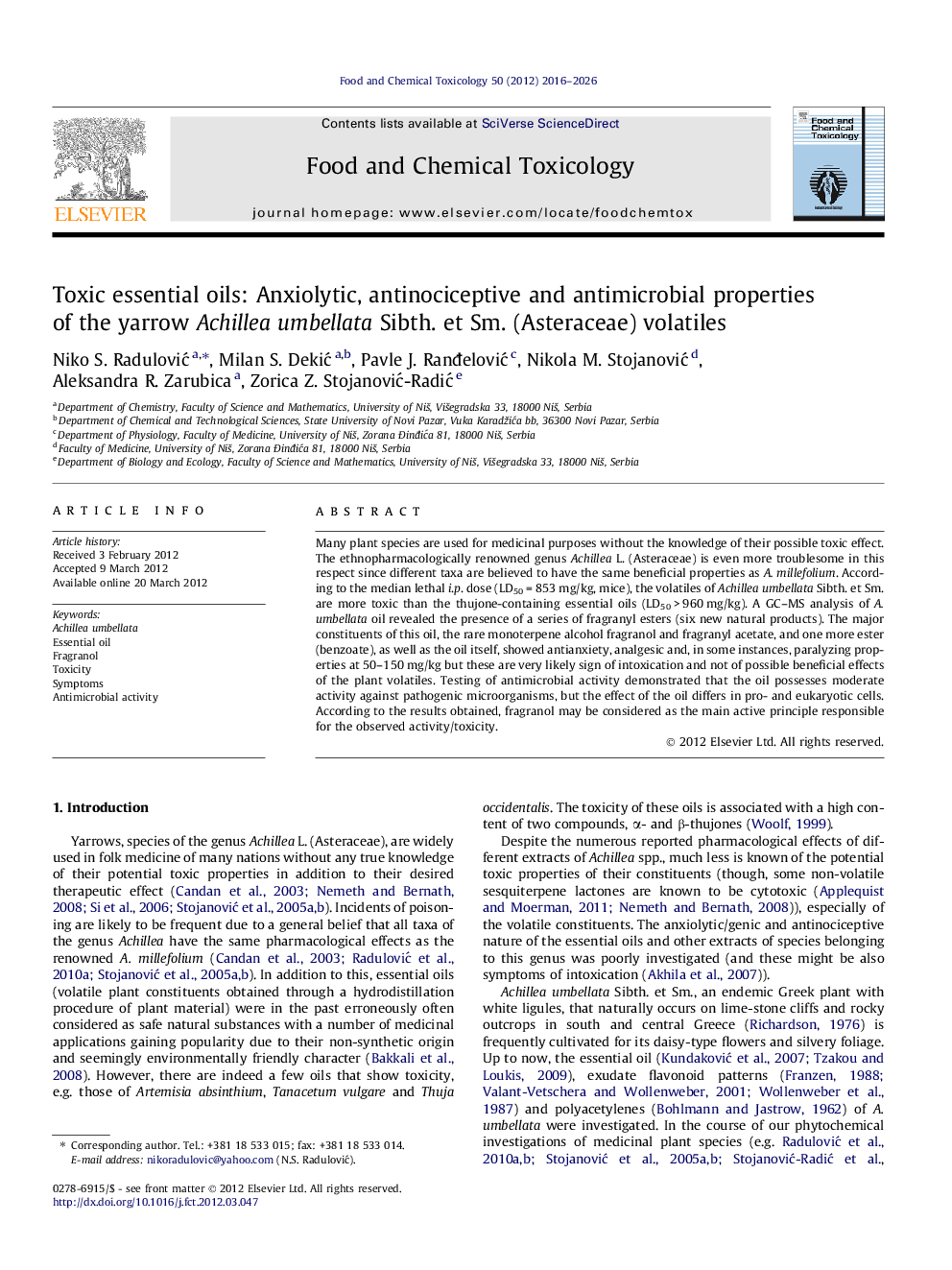| Article ID | Journal | Published Year | Pages | File Type |
|---|---|---|---|---|
| 5852862 | Food and Chemical Toxicology | 2016 | 11 Pages |
Many plant species are used for medicinal purposes without the knowledge of their possible toxic effect. The ethnopharmacologically renowned genus Achillea L. (Asteraceae) is even more troublesome in this respect since different taxa are believed to have the same beneficial properties as A. millefolium. According to the median lethal i.p. dose (LD50Â =Â 853Â mg/kg, mice), the volatiles of Achillea umbellata Sibth. et Sm. are more toxic than the thujone-containing essential oils (LD50Â >Â 960Â mg/kg). A GC-MS analysis of A. umbellata oil revealed the presence of a series of fragranyl esters (six new natural products). The major constituents of this oil, the rare monoterpene alcohol fragranol and fragranyl acetate, and one more ester (benzoate), as well as the oil itself, showed antianxiety, analgesic and, in some instances, paralyzing properties at 50-150Â mg/kg but these are very likely sign of intoxication and not of possible beneficial effects of the plant volatiles. Testing of antimicrobial activity demonstrated that the oil possesses moderate activity against pathogenic microorganisms, but the effect of the oil differs in pro- and eukaryotic cells. According to the results obtained, fragranol may be considered as the main active principle responsible for the observed activity/toxicity.
Graphical abstractDownload full-size imageHighlights⺠Yarrow volatiles are more toxic to mice (LD50 853 mg/kg) than thujone containing oils. ⺠Achillea umbellata constituents showed anxiolytic, analgesic and paralyzing activity. ⺠The oil is comprised of a rare monoterpene alcohol fragranol and its esters. ⺠A. umbellata oil exerts a different effect on prokaryotic and eukaryotic cells. ⺠Fragranol is believed to be the main carrier of the observed activity/toxicity.
